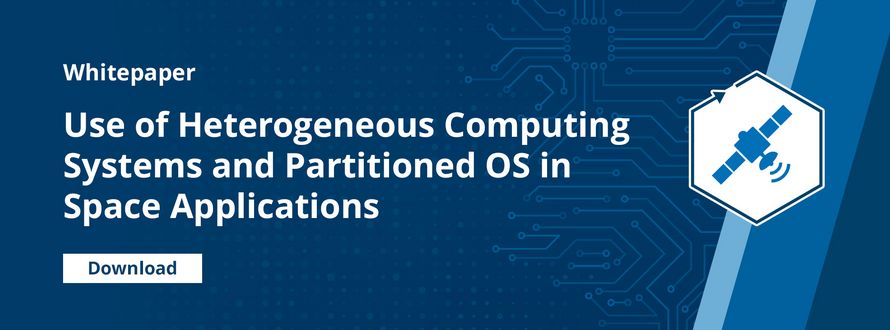As the demand for higher integration and miniaturization grows, especially in the area of nano and picosatellite constellations, the utilization of advanced embedded computing systems and operating systems becomes imperative. In our whitepaper, we explore how the combined use of MMU- and MPU-based partitioned real-time operating systems on COTS heterogeneous computing platforms enhances integration, optimizes SWaP (Size, Weight, and Power), and reduces costs.
Heterogeneous computing systems offer tremendous potential for space missions by employing a combination of different processing elements optimized for specific tasks. By leveraging processors like GPPs, DSPs, NPUs, FPGAs, and GPUs, these systems provide high performance, flexibility, robustness, and energy efficiency. Notable examples include NanoXplore NG-Ultra, Xilinx Zynq™ UltraScale+™ MPSoC/RFSoC, and Xilinx Versal™ Adaptive SoC.
Our whitepaper highlights the advantages of employing heterogeneous computing systems in space applications. These include improved performance through task distribution, enhanced flexibility for future upgrades, robustness with redundant processing elements, and energy efficiency with optimized task-specific processors. The selection of appropriate processing elements and the development of a well-designed system architecture are crucial for successful implementation.
Discover how to utilize the power of heterogeneous computing systems can revolutionize space exploration and space missions.
Download the Whitepaper

